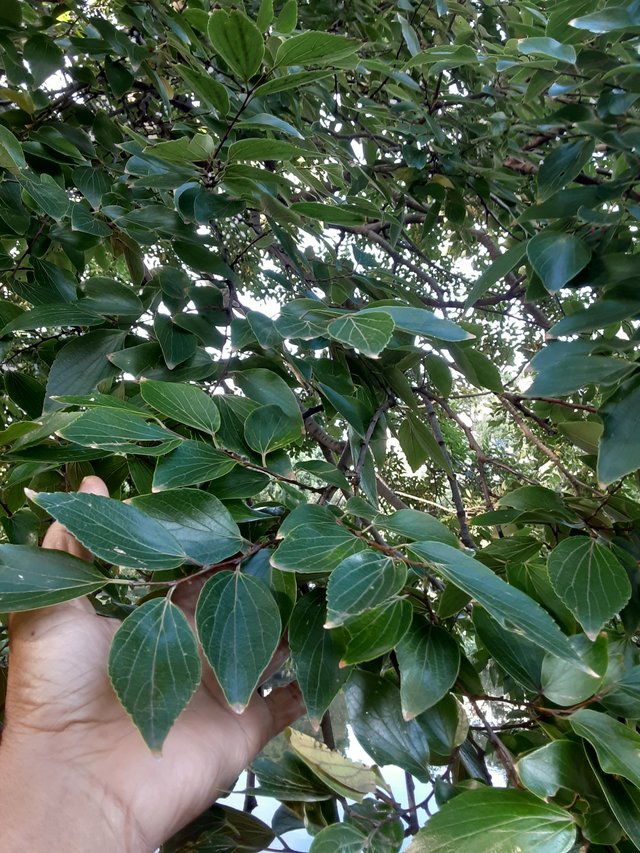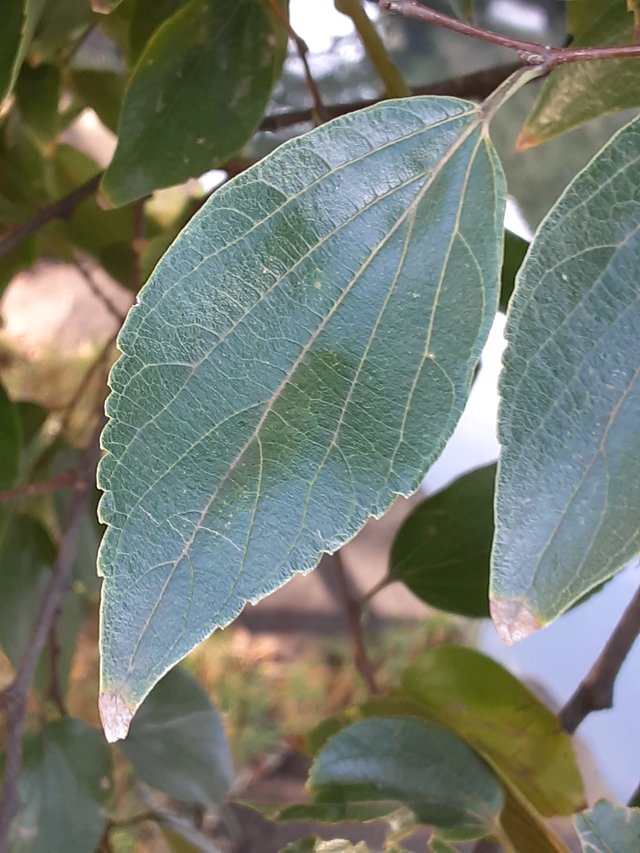
Celtis sinensis, commonly known as the Chinese hackberry or Japanese hackberry, is a deciduous tree native to East Asia, particularly China, Japan, and Korea. It is a popular ornamental tree due to its attractive foliage and adaptability to various growing conditions.
The leaves of Celtis sinensis are a key characteristic of the tree. They are simple, alternate, and have a distinctive shape. The leaf blade is typically ovate or elliptic, with a pointed tip and a rounded or slightly heart-shaped base. The margins of the leaves are serrated, meaning they have small, tooth-like projections. The upper surface of the leaves is a glossy dark green, while the underside is a paler green and often slightly hairy.
One of the most striking features of the leaves is their fall color. As autumn approaches, the leaves of Celtis sinensis turn a beautiful golden yellow, adding a vibrant touch to the landscape. This color change is particularly noticeable in areas with cool nights and warm days, which trigger the production of pigments that give the leaves their autumnal hue.

In addition to their aesthetic appeal, the leaves of Celtis sinensis also play a role in the tree's ecology. They provide food for various herbivores, including insects and mammals. The leaves also contribute to the tree's overall health by capturing sunlight and converting it into energy through photosynthesis.
Overall, the leaves of Celtis sinensis are an important part of the tree's identity and contribute to its beauty and ecological significance. Their distinctive shape, color, and fall foliage make them a delightful sight to behold, especially during the autumn season.
Ref.:
 |  |
Upvoted! Thank you for supporting witness @jswit.
Downvoting a post can decrease pending rewards and make it less visible. Common reasons:
Submit